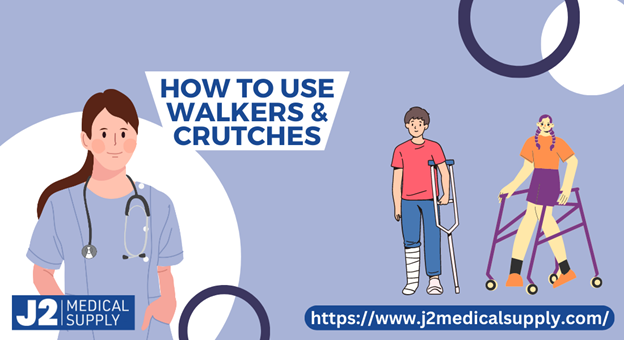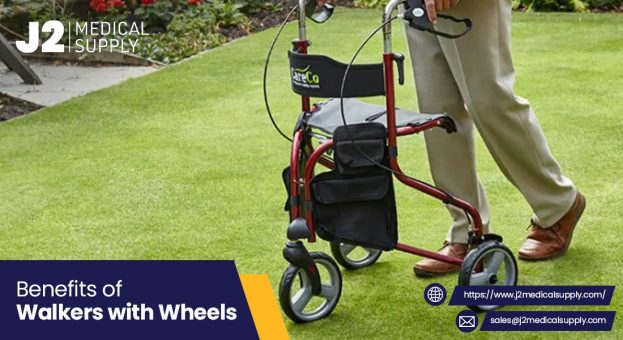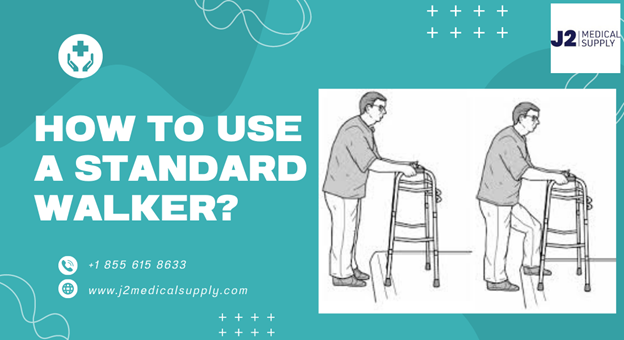In healthcare, assisting patients with mobility challenges is a critical aspect of providing comprehensive care. Walkers and crutches are indispensable tools that enhance mobility and independence, facilitating a smoother recovery process and reducing the risk of falls. This guide aims to equip healthcare providers with the essential knowledge and techniques to effectively use these walking aids, promoting optimal patient outcomes and improved quality of life. It includes Fundamentals of Nursing.
Navigating the healthcare environment requires healthcare providers to understand mobility devices such as walkers and crutches thoroughly. These aids offer stability, support, and balance, enabling patients to regain their independence and engage in everyday activities. By mastering walkers and crutches, healthcare providers can empower their patients to move confidently, promoting faster recovery and enhancing overall well-being.
Fundamentals of Nursing: Mastering the Use of Walkers & Crutches
In this comprehensive guide, we delve into the fundamentals of nursing when utilizing walkers and crutches. From understanding the benefits of these devices to implementing proper safety measures, we cover every aspect necessary for their practical usage. We will explore techniques for walking, climbing stairs, sitting down, and standing up, providing healthcare providers with practical insights to ensure patients make the most of these invaluable tools.
Importance of Mobility Devices in Healthcare
In healthcare, mobility devices like walkers and crutches play a crucial role in assisting patients with limited mobility. These devices provide much-needed support, stability, and balance, enabling individuals to move safely and independently. By understanding the importance of these mobility aids, healthcare providers can recognize their significant impact on promoting patient independence and overall well-being.
Walkers and crutches offer numerous benefits in the healthcare environment:
- They enhance mobility by providing support and stability to individuals with mobility challenges, allowing them to move more confidently.
- These devices aid in fall prevention by offering an additional point of contact with the ground and improving balance during ambulation.
- Walkers and crutches contribute to a quicker recovery by promoting active movement and reducing the risk of complications associated with immobility.
By utilizing mobility devices effectively, healthcare providers can help patients regain their independence and improve their quality of life. Proper use of walkers and crutches facilitates safe ambulation and enhances the patient’s overall experience within the healthcare environment. Healthcare providers need to recognize the value of these devices and incorporate them as integral components of patient care.
Selecting the Right Walker or Crutch
Choosing the appropriate walker or crutch ensures optimal mobility and patient safety. J2 Medical Supply, an MBE-certified manufacturer and supplier of high-quality medical solutions, offers a diverse range of walkers and crutches designed to cater to individual needs. Their extensive selection allows healthcare providers to find the perfect fit for their patients, considering factors such as height adjustment, weight-bearing capacity, maneuverability, and additional features.
When selecting a walker, healthcare providers must consider the patient’s height and the device’s adjustability. The walker should be positioned at a height that allows for proper posture and a comfortable grip while walking. Additionally, weight-bearing capacity is essential, as it ensures the walker can support the patient’s weight adequately.
Crutches, on the other hand, require careful consideration of the patient’s upper body strength and coordination. J2 Medical Supply offers a variety of crutches, including forearm crutches and underarm crutches, each suited to different levels of upper body strength and mobility needs.
By collaborating with J2 Medical Supply, healthcare providers can access a wide range of high-quality walkers and crutches, ensuring that patients receive the most suitable device for their individual requirements. The expertise and diverse selection offered by J2 Medical Supply facilitate optimal patient outcomes and contribute to improved mobility and independence.
Proper Techniques for Using Walkers Effectively
Using a walker correctly is essential for harnessing its full benefits. When healthcare providers and patients understand the proper techniques for utilizing walkers, patients can move with confidence and stability, ultimately promoting improved mobility and independence.
The first step in using a walker effectively is ensuring that it is adjusted to the correct height. The walker should be set at a height that allows the patient to maintain an upright posture with their arms slightly bent at the elbows. This positioning ensures optimal balance and support while walking.
When using a walker, it is important to maintain three points of contact with the ground at all times. This involves placing the walker slightly ahead of the patient, moving one leg forward, and then stepping with the other leg to meet the walker. This three-point technique provides stability and prevents the walker from sliding or tipping.
Mastering the Use of Crutches | Fundamentals of Nursing
It is crucial to position the crutches correctly and distribute weight appropriately when using crutches. The handgrips should be set at a comfortable height, allowing the patient’s elbows to be slightly flexed when holding onto them. The patient should bear weight on their hands and not on their armpits to prevent discomfort and potential nerve damage.
Understanding the fundamentals of nursing includes proficiency in assisting patients with mobility challenges, such as utilizing crutches for ambulation. To achieve a balanced gait while using crutches, patients should follow a four-point gait pattern. This involves moving one crutch forward, followed by the opposite leg, and then repeating the process with the other crutch and leg. This technique provides stability, promotes an even distribution of weight, and ensures efficient movement.
Navigating stairs and uneven surfaces with crutches requires additional techniques. When ascending stairs, patients should lead with the unaffected leg while using the crutches for support. Conversely, when descending stairs, patients should lead with the crutches followed by the affected leg. Healthcare providers should educate patients on these techniques and closely monitor their progress to ensure safety and prevent accidents.
Safety Measures and Precautions for Walker and Crutch Users
Ensuring the safety of patient’s walkers and crutches is of utmost importance. Healthcare providers play a crucial role in educating patients about safety measures and precautions associated with these mobility devices. By following these guidelines, patients can minimize the risk of accidents and maintain a safe healthcare environment.
As part of the fundamentals of nursing, ensuring patient safety is paramount, especially when it comes to fall prevention while using walkers and crutches. Fall prevention is a primary concern when using walkers and crutches. Healthcare providers should emphasize the importance of using the devices on even surfaces, avoiding slippery areas, and removing any tripping hazards from the surroundings. Patients should also be educated on the correct use of brakes and the significance of maintaining proper body alignment and posture while walking.
Understanding the fundamentals of using walkers and crutches is essential in the field of nursing to promote enhanced mobility and independence for patients with limited mobility. By incorporating proper techniques, healthcare providers can assist patients in maximizing the benefits of these devices and facilitating a faster recovery process. Selecting the right walker or crutch, such as those offered by J2 Medical Supply, ensures patient comfort and safety. Prioritizing patient safety through education on fall prevention strategies and regular maintenance further contributes to a secure healthcare environment. By mastering the use of these mobility aids and collaborating with reliable suppliers, healthcare providers can significantly improve patient outcomes, fostering independence and overall well-being.




